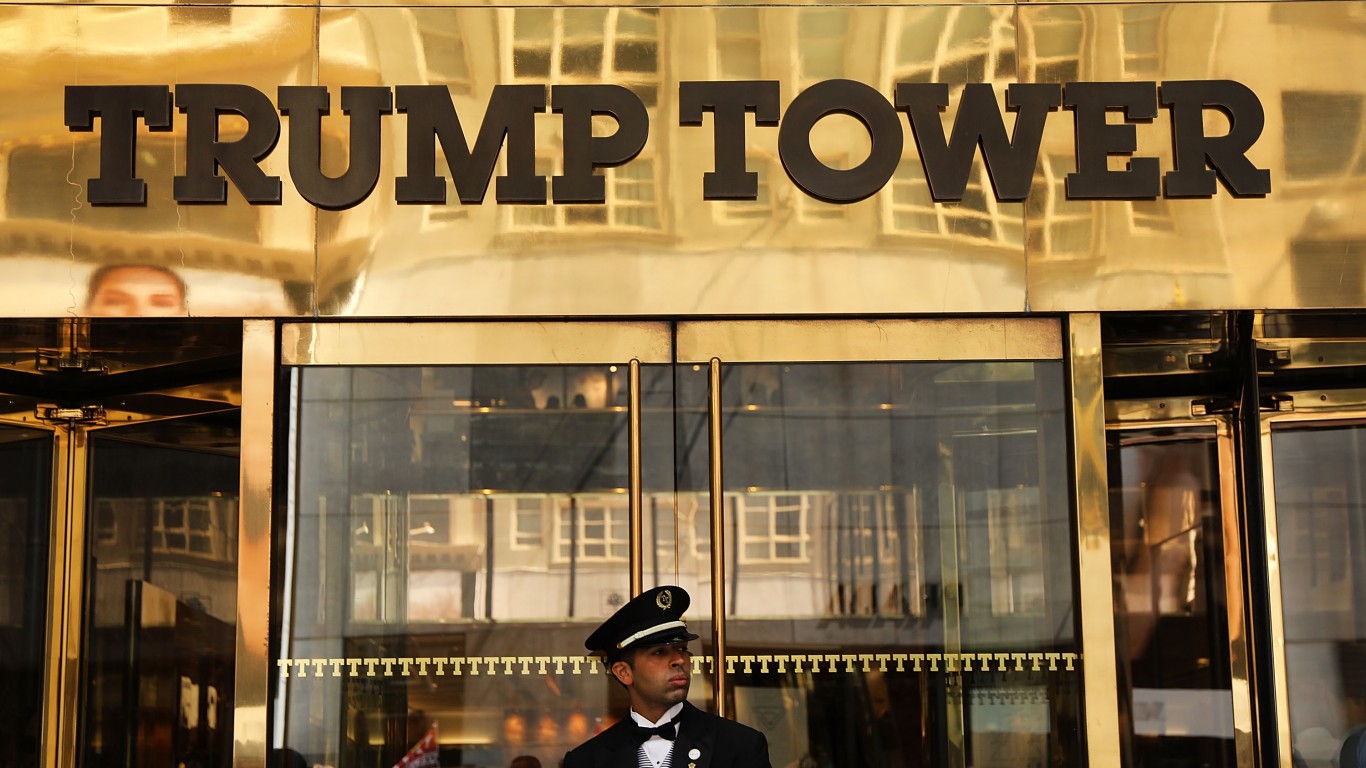
A recent United Nations report found that the vast majority of people around the world live in a country where income inequality is worsening — the richest residents have an increasingly large share of total wealth, while the poorest residents have made smaller gains in wealth or none at all.
Inequality is not just an issue for those with lower income levels. The disparity results in slower economic growth for the country as a whole. While no country has a perfectly equal society or income distribution, some nations stand out as having particularly wide gulfs between their richest and poorest residents.
To determine the country with the widest gaps between the rich and the poor, 24/7 Wall St. reviewed data on the Gini coefficient — a measure of income inequality based on the distribution of income across a population — for 218 countries using information from World Bank.
The Gini coefficient measures income inequality on a 0 to 1 scale. A country where all income earned goes to one person would score 1, while a nation full of residents with the same income — would score 0. The Gini coefficient of most of the 115 countries for which there is data is lower than 0.4. Just 10 have a Gini index score of over 0.5, while 20 countries scored under 0.3. For context, the U.S. Gini coefficient is 0.414. The 29 countries on this list have a Gini index score of 0.420 or higher.
Nearly all of the countries with the widest income gaps are located either in South America or Africa. For a variety of reasons — including the lingering effects of many of these nations’ former status as colonies of wealthy countries — many countries on this list are governed by systems that unfairly favor those in power at the expense of most citizens. These countries tend to have relatively low incomes and small economies.
However, income inequality is not isolated to just low-income countries. The U.S. and other wealthy nations also have a fairly wide gap between the richest and poorest residents, and this issue tends to get worse during times of economic hardship. For instance, during the COVID-19 pandemic, while many hourly workers were furloughed or laid off, the wealthiest Americans added significantly to their personal fortunes.
Namibia has the biggest gap. Here are the details:
> GDP per capita: $10,064 (117th out of 186 countries)
> Poverty rate: 17.4% (74th out of 115 countries)
> Pct. of population living under $1.90 a day: 13.8% (25th out of 101 countries)
> Unemployment rate: 20.4% (6th out of 187 countries)
> Population: 2.5 million
Our methodology: To determine the country with the widest gaps between rich and poor, 24/7 Wall St. reviewed data on the Gini coefficient for 218 countries from the World Bank. Countries were ranked on the Gini coefficient, a measure of income inequality based on the distribution of income across a population, using the most recent year of data from 2015 to 2019. Supplemental data on population in 2019; GDP per capita in 2019, estimated using the purchasing power parity method; and percentage of the population living on less than $1.90 a day in 2011 international prices, using the latest year of data from 2015 to 2019, came from the World Bank.
Click here to read Countries with The Widest Gap Between Rich and Poor
Get Ready To Retire (Sponsored)
Start by taking a quick retirement quiz from SmartAsset that will match you with up to 3 financial advisors that serve your area and beyond in 5 minutes, or less.
Each advisor has been vetted by SmartAsset and is held to a fiduciary standard to act in your best interests.
Here’s how it works:
1. Answer SmartAsset advisor match quiz
2. Review your pre-screened matches at your leisure. Check out the advisors’ profiles.
3. Speak with advisors at no cost to you. Have an introductory call on the phone or introduction in person and choose whom to work with in the future
Thank you for reading! Have some feedback for us?
Contact the 24/7 Wall St. editorial team.



